Mr. and Mrs. Frick wanted a healthy and comfortable home for their family, and they were able to afford the most attractive land and latest technology available to realize their desire. In
last week’s blog, we learned that the Homewood area offered wealthy families a neighborhood located away from Pittsburgh’s industry and pollution, coupled with convenient access to the city via rail. The Frick estate was tapped into community utilities, but the family could also enjoy the benefits of living in a setting of woodlands and green space away from the grime and noise of more densely populated neighborhoods. So, the couple settled at Clayton (then known as Homewood). At their January 1883 move-in date, the Fricks had telephone service, a coal-fired boiler for heat, running water from the city, and well water. They also had gas lighting, a gas-fired kitchen range and laundry stove, and a gas-fueled boiler for heating and hot water. But technology for many household functions changed rapidly during the Fricks’ time at Clayton, and household papers indicate that they kept pace with improvements.
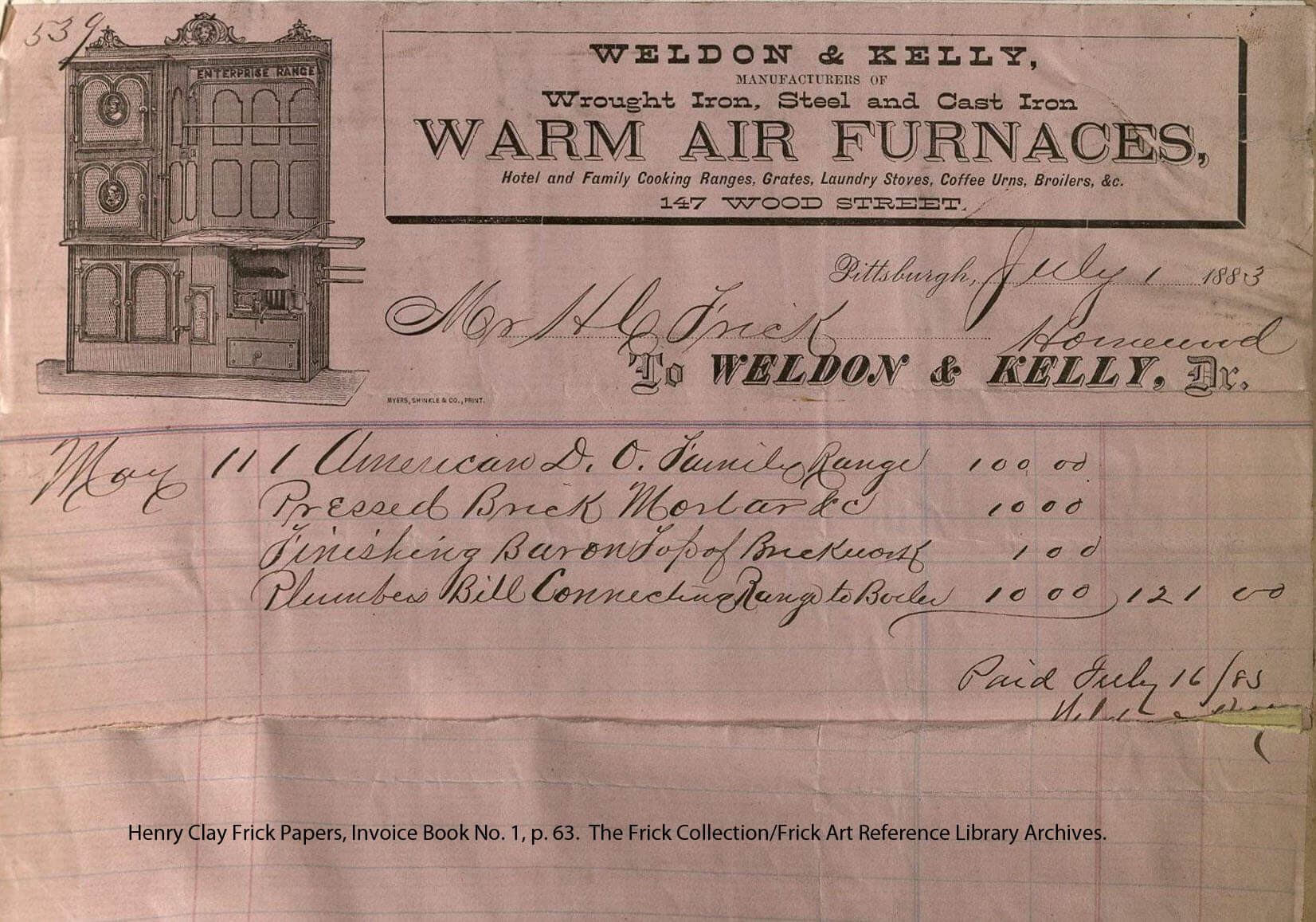
Weldon & Kelly invoice for an "American D.O. Family Range" and other items, July 1, 1883.
Courtesy of The Frick Collection/Frick Art Reference Library Archives.
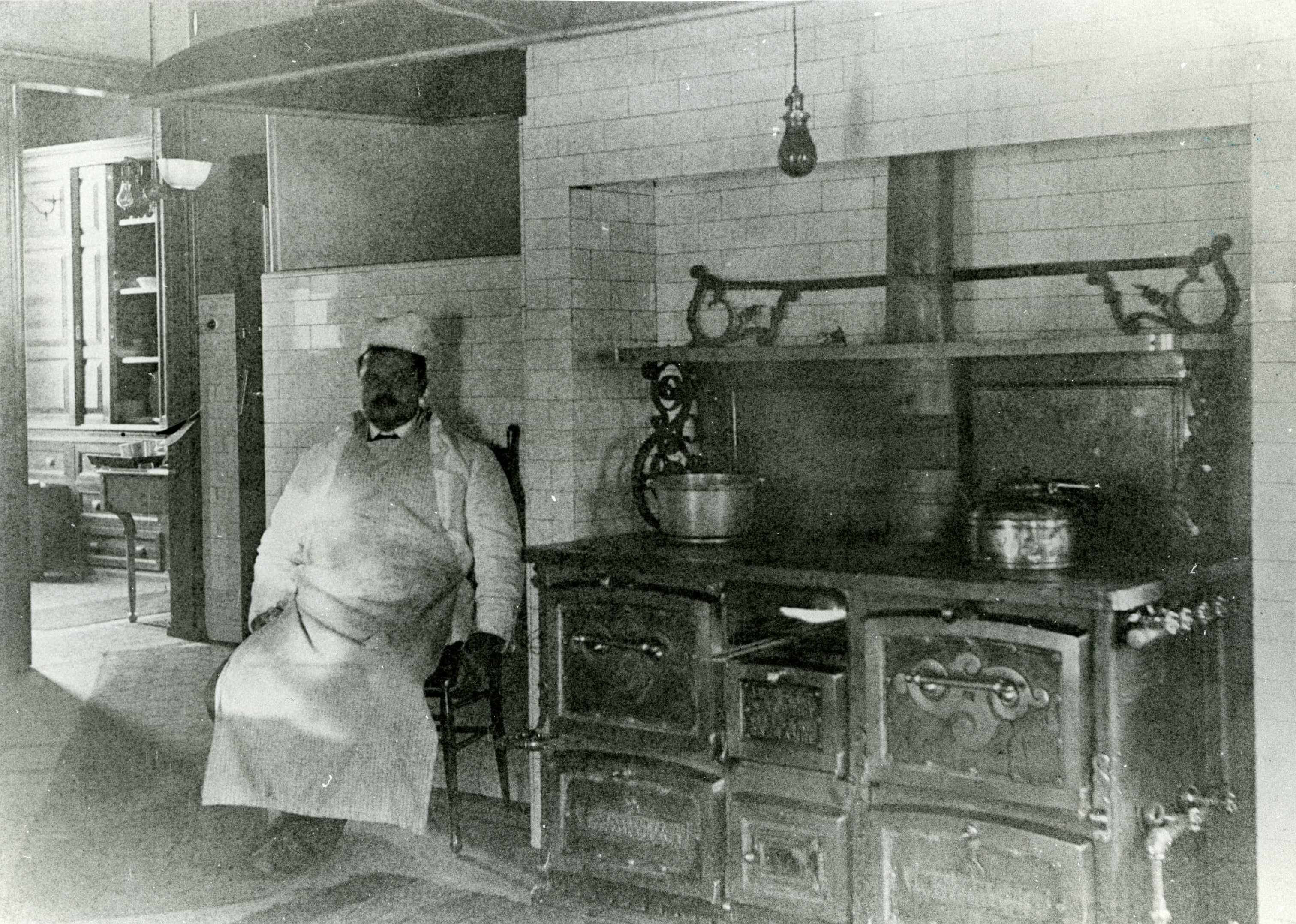
Chef Spencer Ford in the kitchen at Clayton next to gas stove, c. 1895. Photo by Lewis Stephany.
Courtesy of The Frick Collection/Frick Art Reference Library Archives.
At the urging of neighbor George Westinghouse, the house was fully wired for electricity in 1888, upgrading gas lighting to electric lighting. For reference, the White House didn’t install electric lighting until 1891. Even years after Clayton was electrified, electric lights were still new enough to be considered more desirable than reliable, as evident in the dining room chandelier. Purchased in 1892, it was fitted for both electricity (which used the flame-shaped glass bulbs in the photograph) and gas (which used the candlestick-shaped fittings, controlled by turning “keys” at the base of the lamp.) You can spot dual fittings throughout the house—most places you see a lightbulb, you'll find the complimentary cylinder or "key."
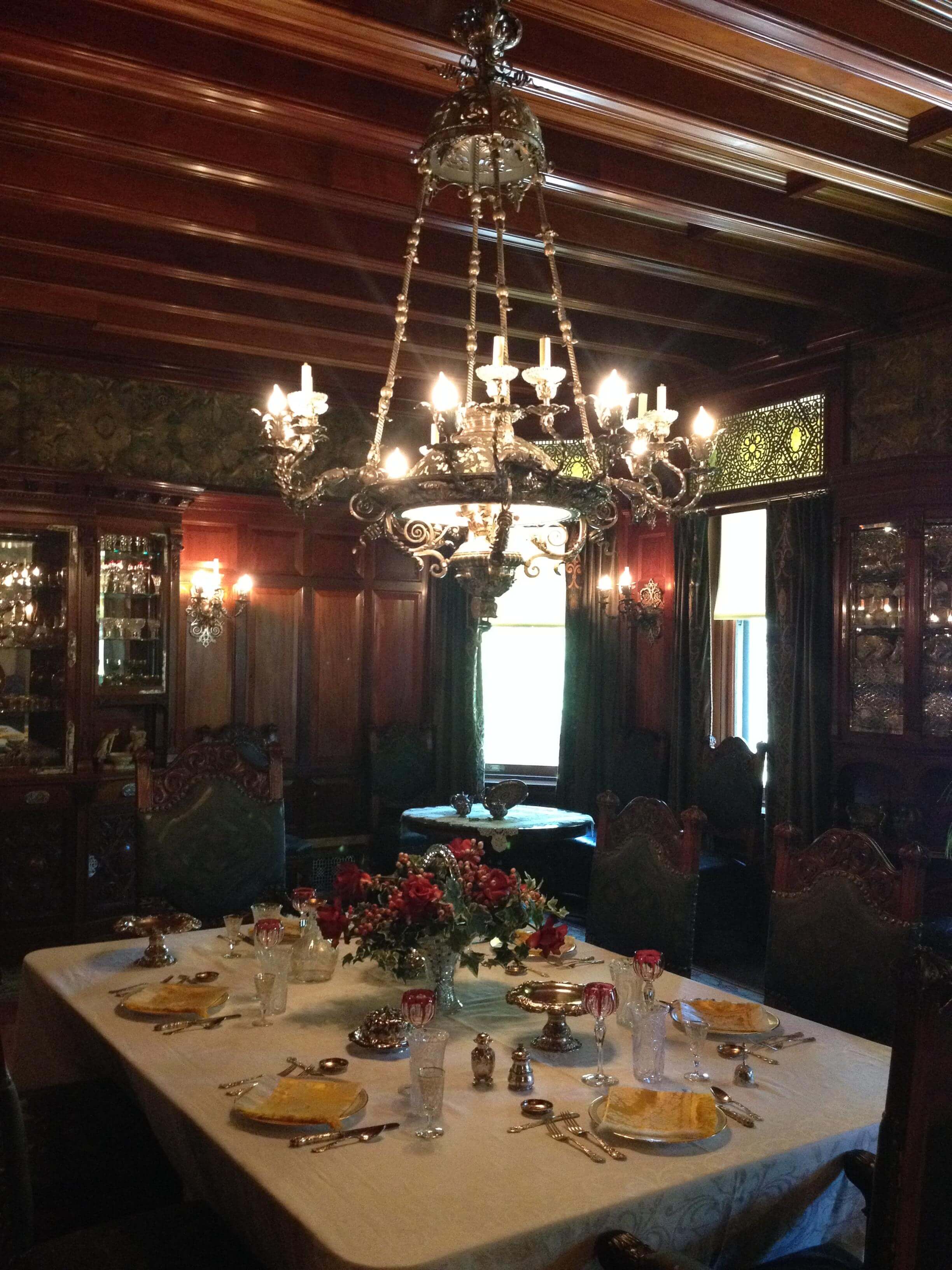
Clayton dining room chandelier, 2015.
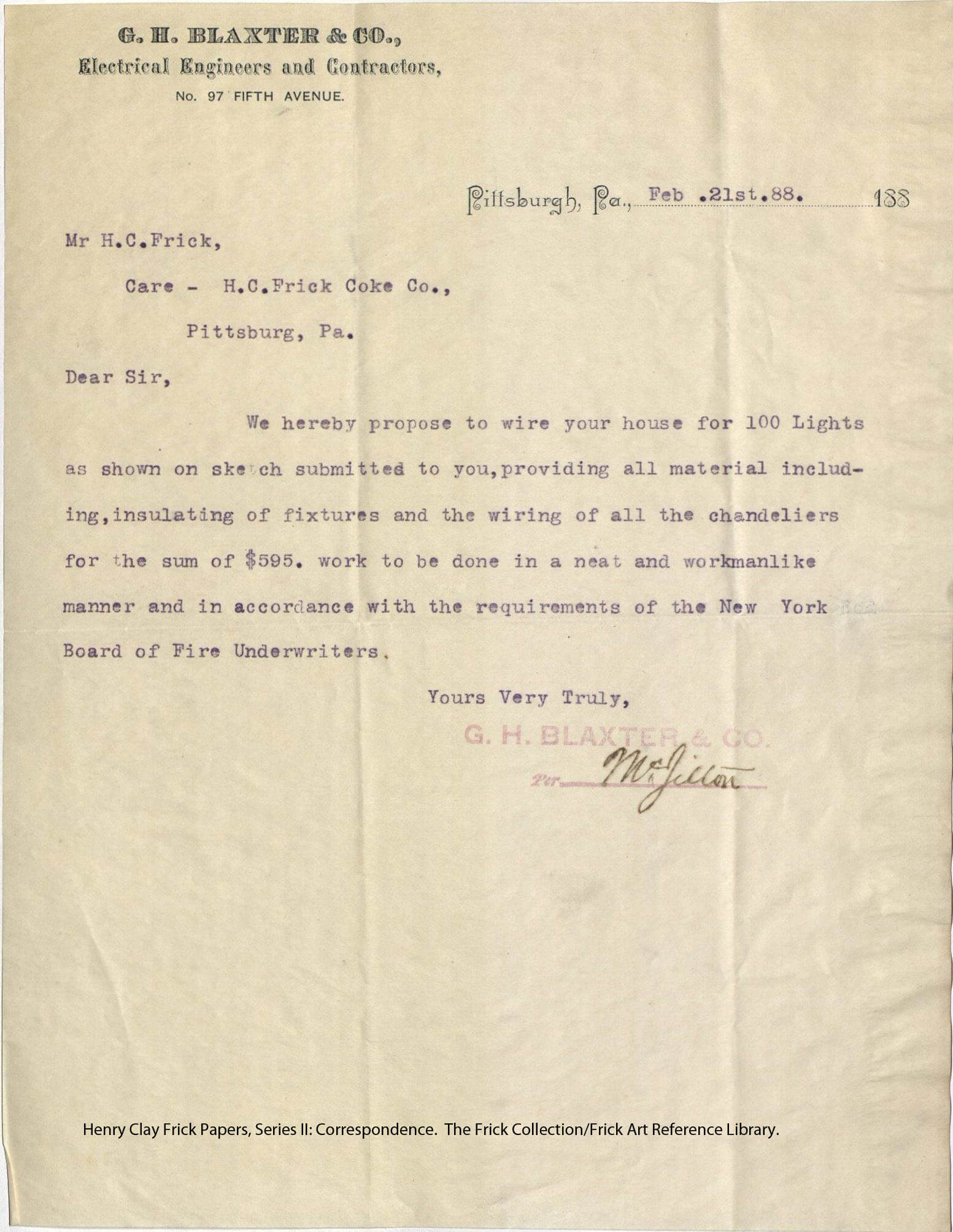
Letter from G.H. Blaxter & Co. to Henry Clay Frick proposing to wire Clayton for electricity, February 21, 1888.
Courtesy of The Frick Collection/Frick Art Reference Library Archives.
Extensive plumbing suggests the heating system was converted entirely from coal to natural gas. Clayton had two furnaces in the basement that worked via hot air rising naturally through ductwork before blowers were invented and later installed. Most rooms of the house also have some type of gas fireplace. There are no wood-burning fireplaces in the home.
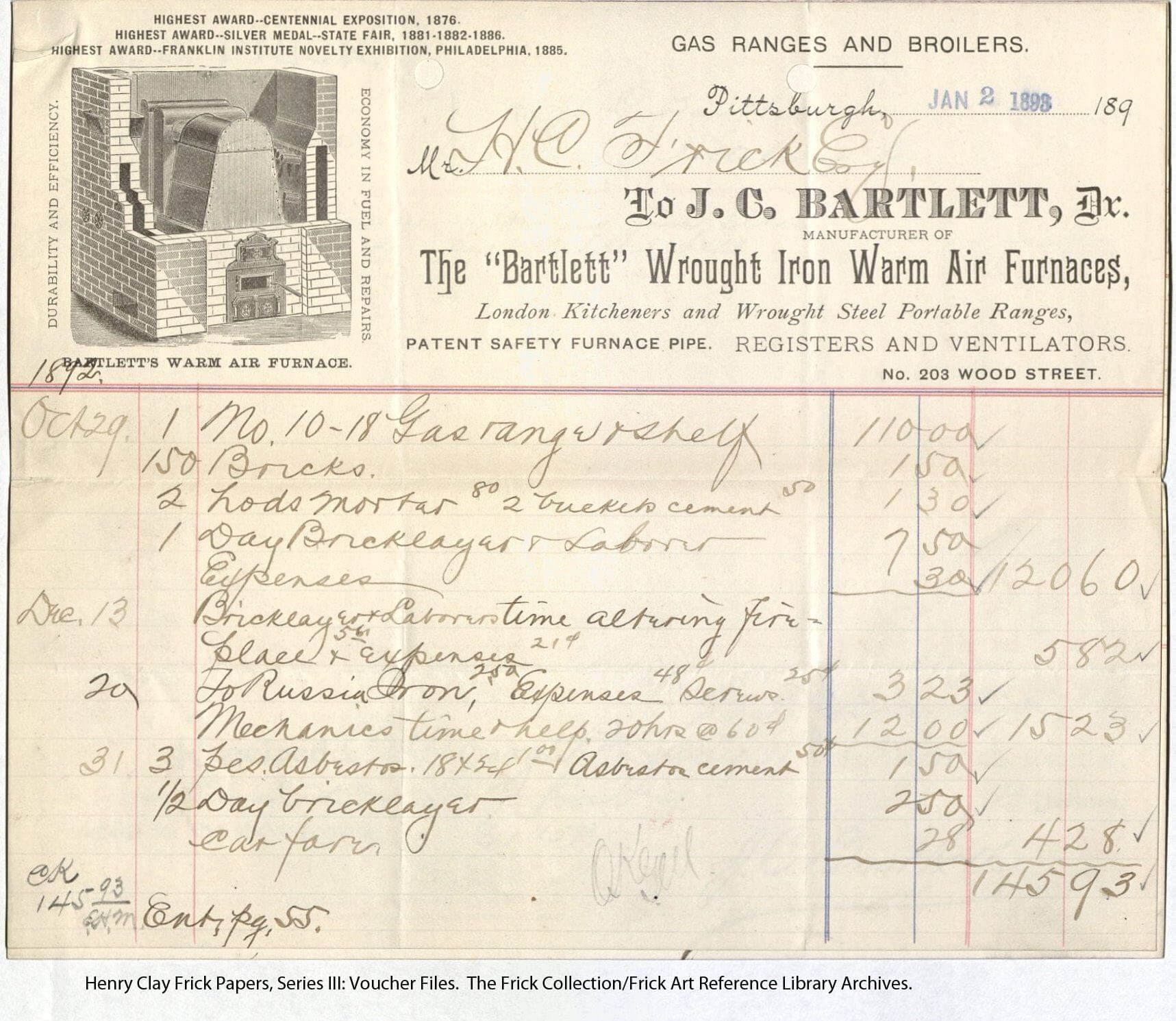
J.C. Bartlett invoice for gas range and other work, 1898.
Courtesy of The Frick Collection/Frick Art Reference Library Archive.
Water filters were used for purifying city and well water. By the late 1880s, the Fricks had made upgrades to the bathrooms as well as improvements to the sewage system. However, as the city water became cleaner and more reliable, the Clayton well became unnecessary for household use.
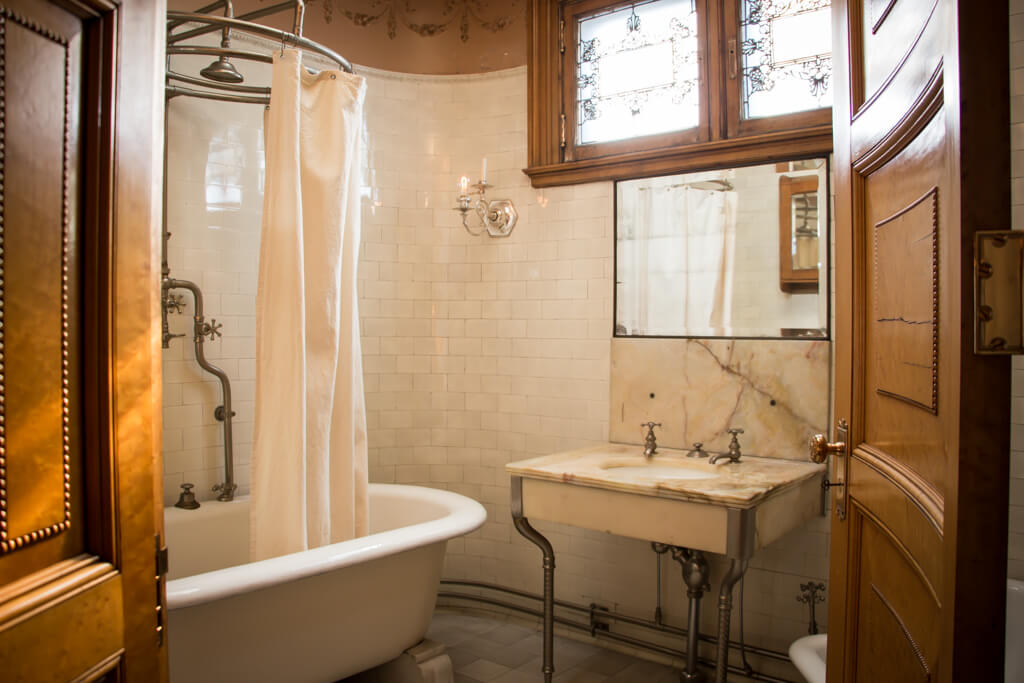
Mr. Frick's bathroom in Clayton, 2015.
Clayton’s bathrooms featured sinks and bathtubs with hot and cold running water, flushing toilets, and in some cases, sitz or half-baths. These sitz baths and the shower in Mr. Frick’s bathroom all featured special sprays that directed water at selected areas—all in keeping with theories of hydrotherapy that were popular in the late 19th century.
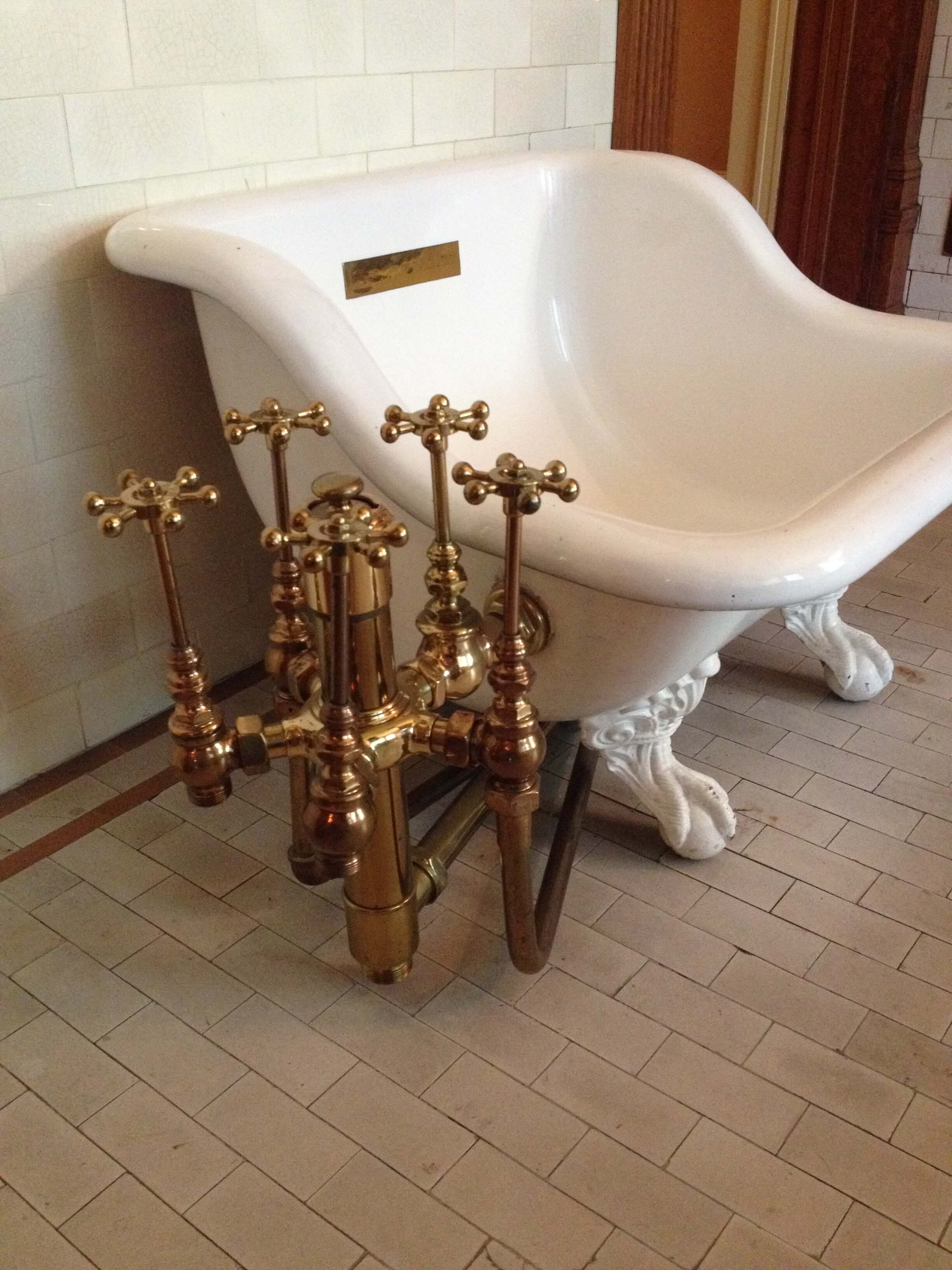
Sitz bath in Mrs. Frick's bathroom in Clayton, 2015.
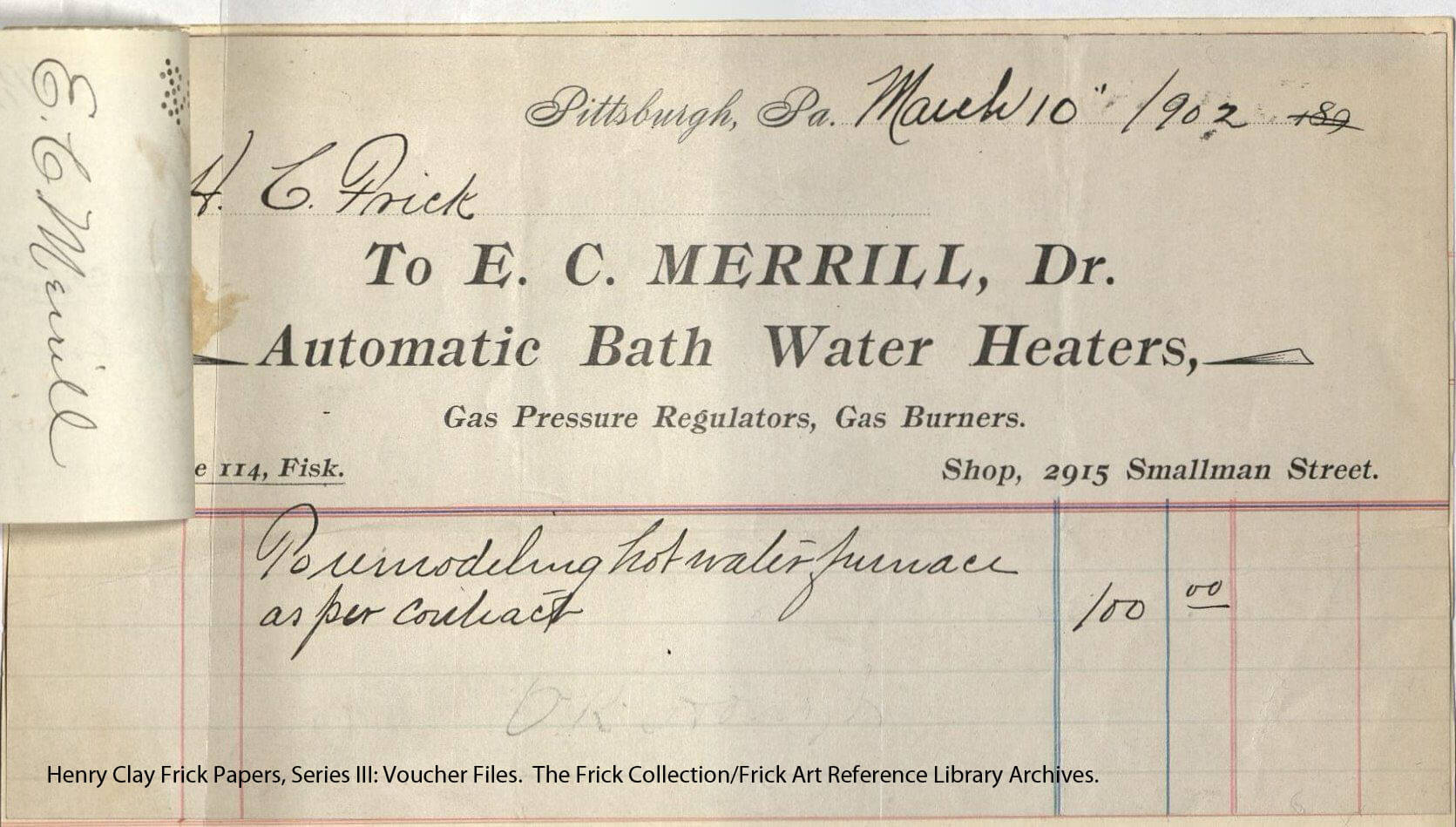
E.C. Merrill receipt for hot water furnace, March 10, 1902.
Courtesy of The Frick Collection/Frick Art Reference Library Archives.
The refrigerators—actually storage areas chilled by big blocks of ice—were repaired or replaced a few times with a large unit installed during the 1892 renovation. The bills for ice reveal that the household could require a couple of tons of ice per month during cooler seasons and three times that much during the summer.
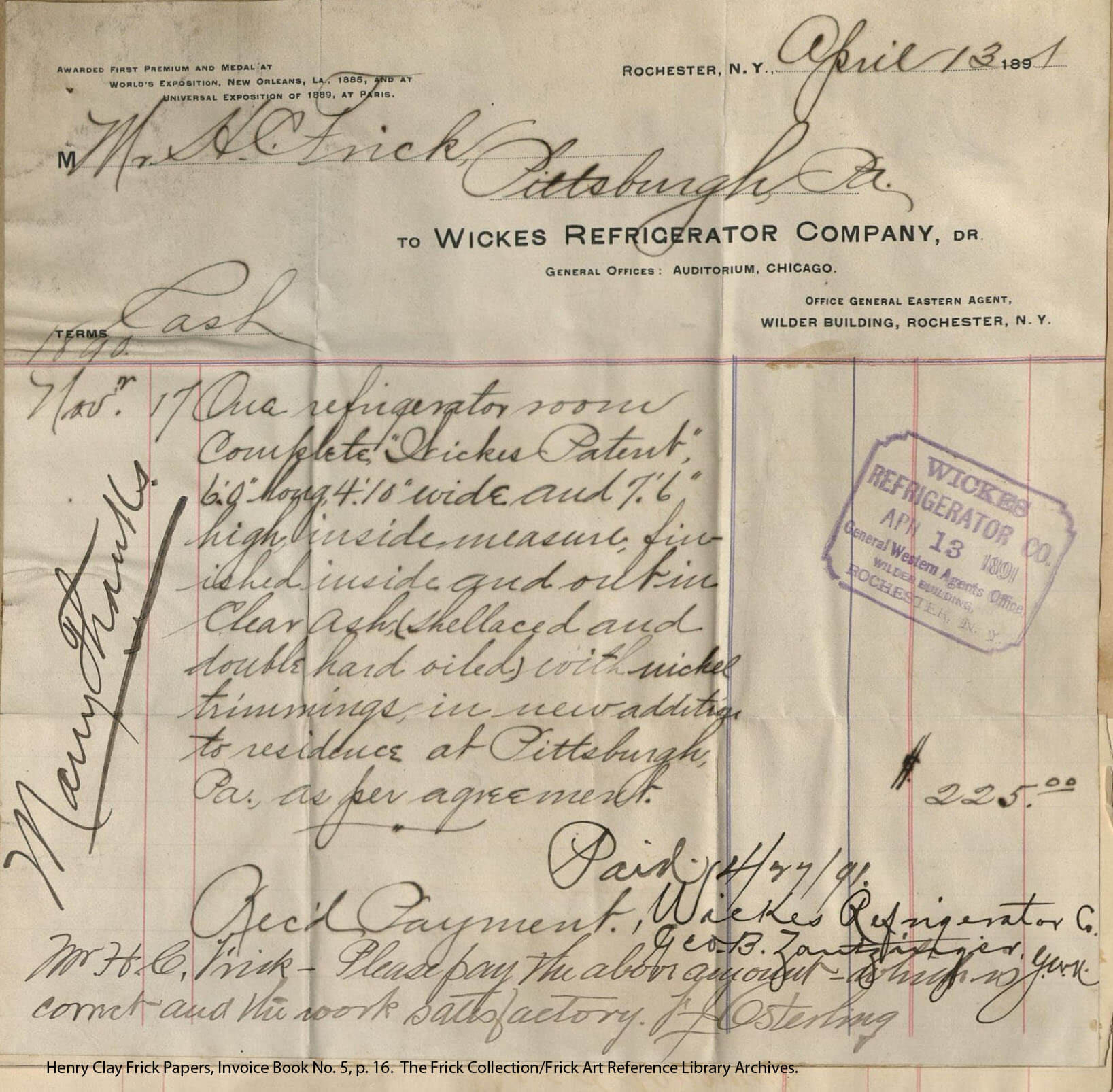
Wickes Refrigerator Company invoice, 1891.
Courtesy of The Frick Collection/Frick Art Reference Library Archives.
A battery-operated alarm system of some kind was installed in 1883. It is not clear whether this was a security system or an annunciator (servant signaling device) purchased from a company that sold alarms. Either way, an annunciator was installed with the 1892 upgrades to the house. The box you see in the photo is on the wall in the kitchen, which also served as the household staff’s base of operation. When the small, doorbell-like button was pushed in nearly any room of the house, the bell at the top of the annunciator rang. At the same time, the correct arrow turned and pointed to the signaling room. Upon hearing the bell, a staff member checked to see which room was calling, and hurried to lend the proper attention. Arrows were reset with the knob at the bottom of the box.
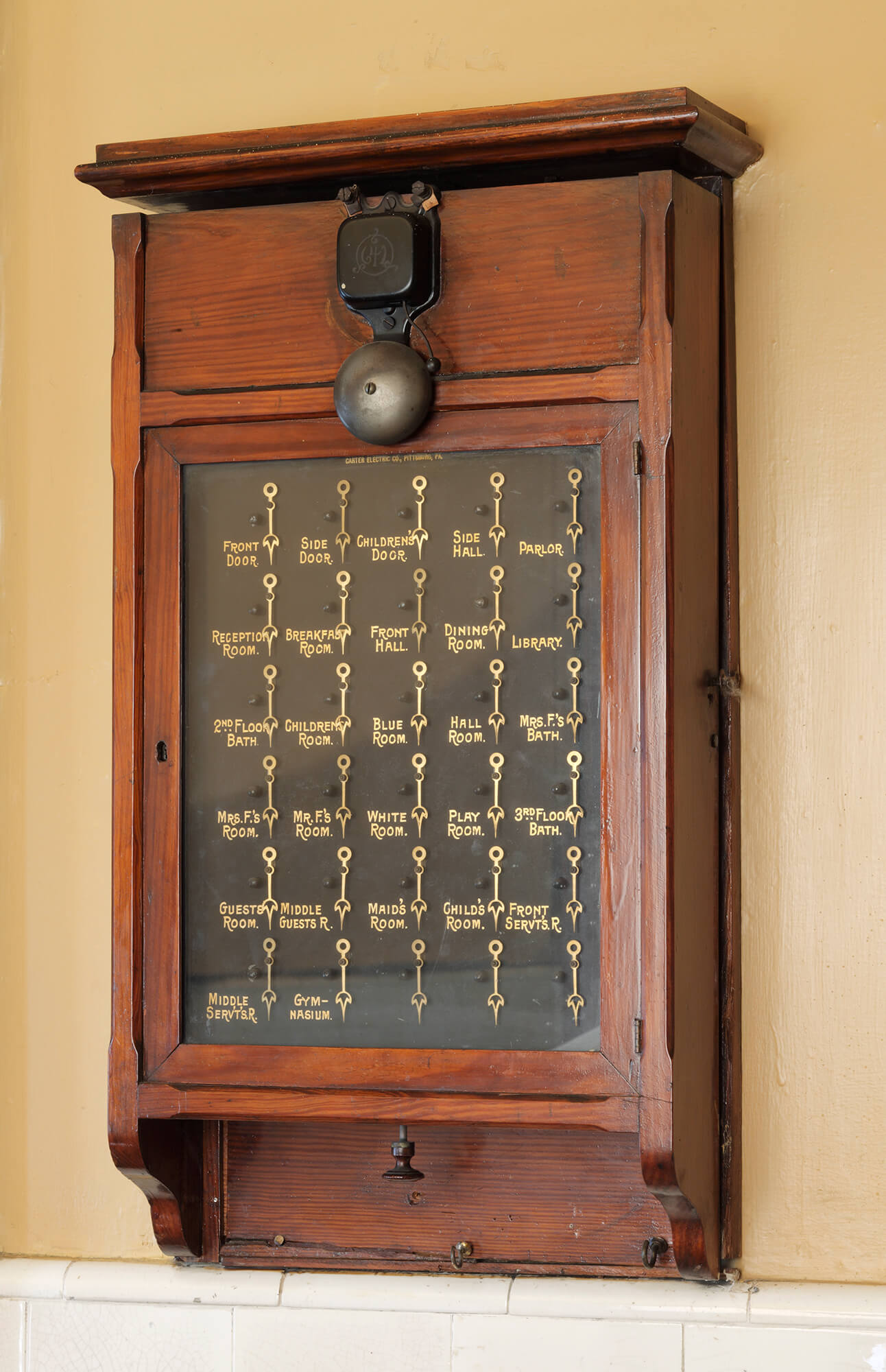
The c. 1892 annunciator at Clayton.
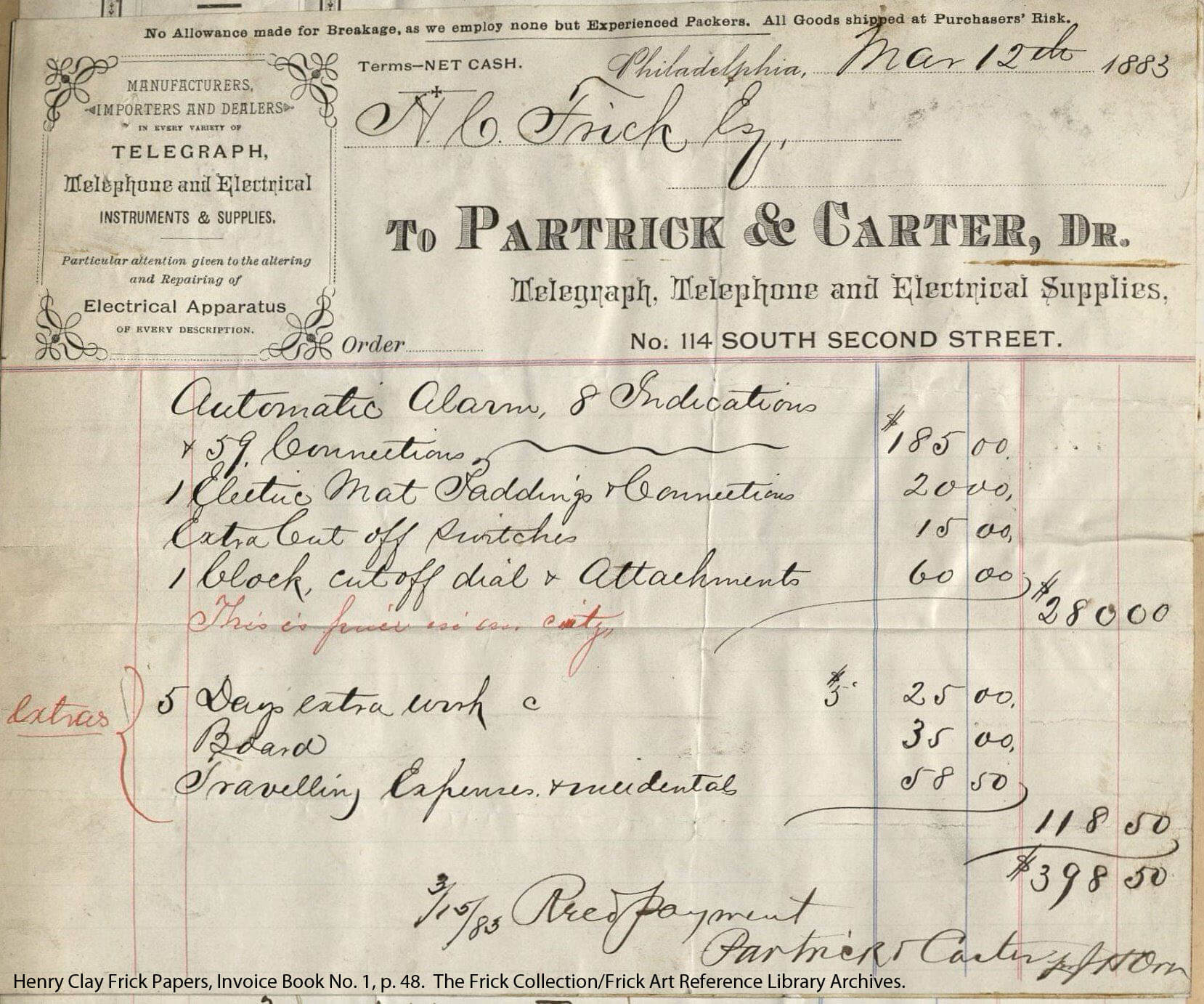
Patrick & Carter invoice for an "automatic alarm," possibly the annunciator, March 12, 1883.
Courtesy of The Frick Collection/Frick Art Reference Library Archives.




